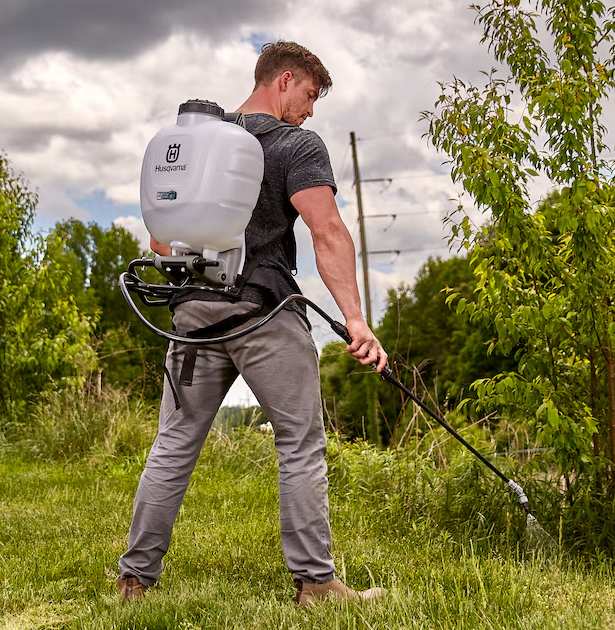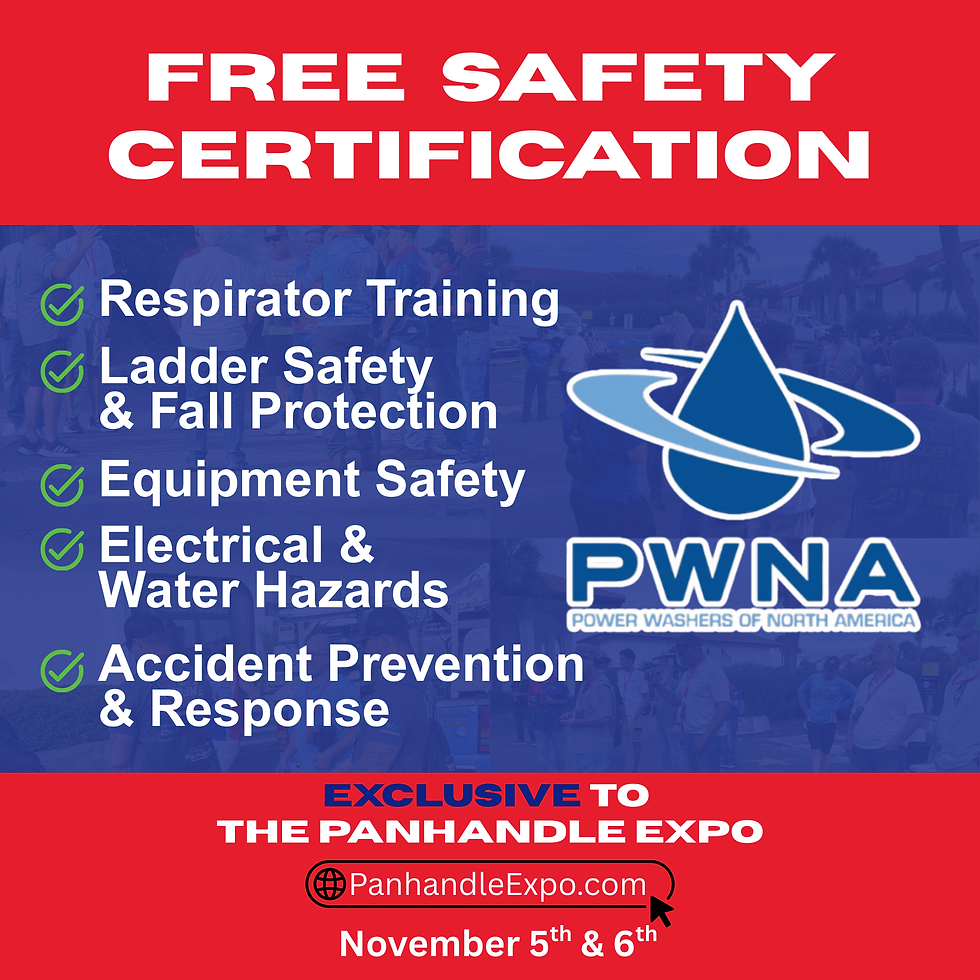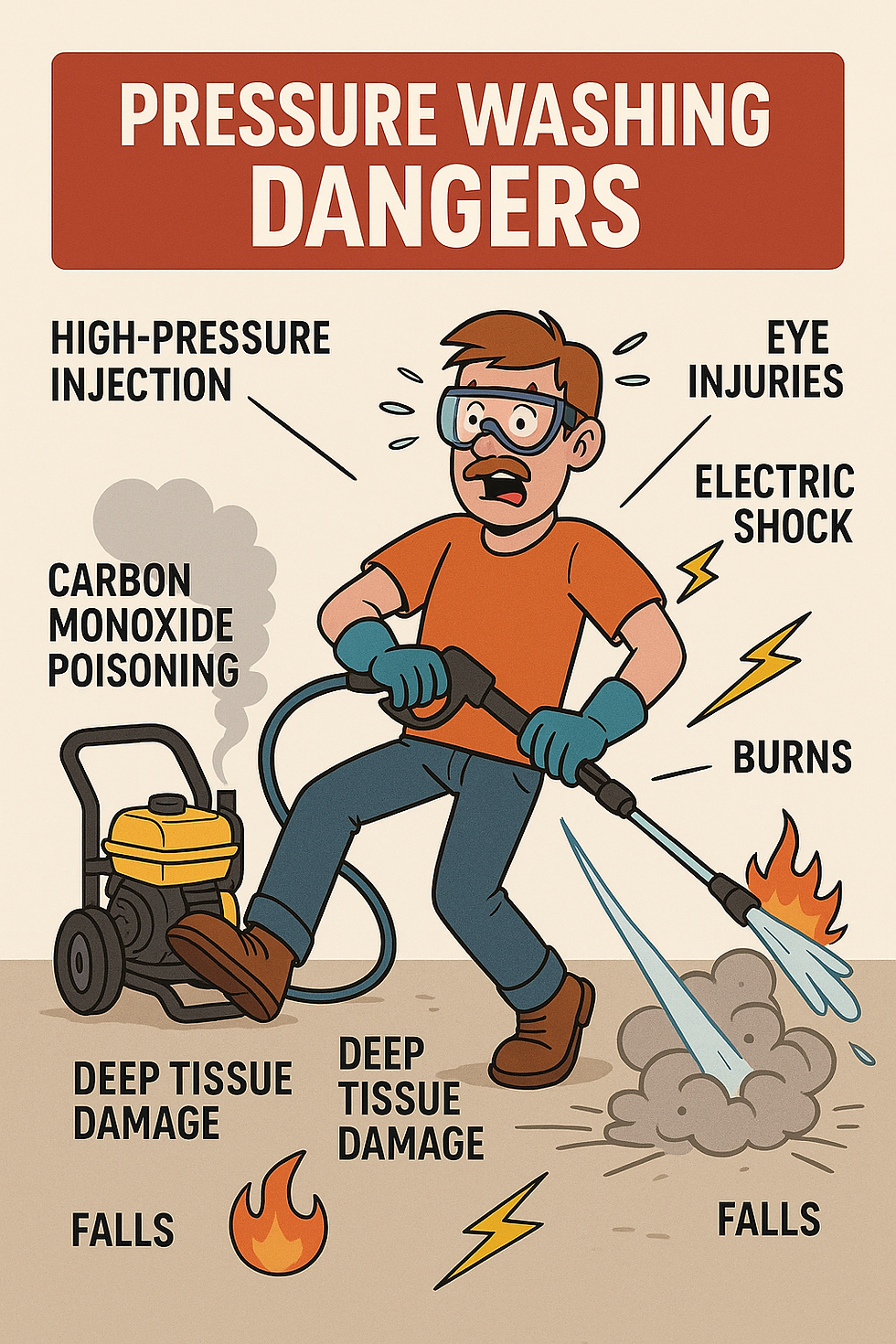The Hidden Dangers of Backpack Sprayers: Why Chemical Safety Starts with the Gear You Use
- Trudi Weickum

- Jul 19
- 3 min read

Let’s talk about something I see far too often in the field: contractors using backpack sprayers for bleach.
It seems convenient. Hands-free. Easy to cover big areas quickly. But I’ve seen what can happen when something goes wrong — and trust me, it’s not worth the risk if you’re not doing it safely.
Chemical burns from leaks, respiratory damage from fumes, and ruined equipment are just the start. So let’s break down what’s really going on inside that sprayer — and how to protect yourself.
Sodium Hypochlorite (SH) Isn’t Friendly to Most Sprayers
Most backpack sprayers were never designed to handle strong bleach solutions. Here’s why that matters:
🧪 SH Corrodes Seals and Gaskets
Chlorine-based solutions eat away at rubber, plastic, and metal parts over time — especially if they sit for long periods. That means your sprayer’s O-rings, diaphragms, and internal valves can fail without warning.
💧 Leaks = Burns
I’ve seen contractors with burns down their backs and arms from a pinhole leak in the wrong place. And let’s be honest — you’re not going to notice a small leak until it’s soaked through your shirt and into your skin.
🌀 Inconsistent Pressure and Spray Patterns
As the components degrade, you lose spray performance. That’s not just inefficient — it can also result in overspray, missed areas, and wasted chemicals.
Chlorine Exposure: More Than Skin Deep
Even if your sprayer is holding up fine, your body might not be. Here’s what SH exposure can cause:
Skin Irritation & Burns: Prolonged contact can lead to rashes, chemical burns, and even blistering
Eye Damage: A splash to the eyes can cause severe irritation or even permanent vision loss
Respiratory Irritation: Inhaling chlorine fumes can lead to coughing, wheezing, shortness of breath, and long-term lung issues
And worst of all?
🧪 Mixing bleach with the wrong chemical — like ammonia — can create toxic chlorine gas
This isn’t a “worst-case scenario.” It’s happened. And it’s deadly.
PPE: Not Optional — Essential
I get it. Most guys don’t love wearing gloves, goggles, or respirators. But safety gear isn’t just for show — it’s there to keep you working tomorrow.
Here's what you need every time you use bleach with a sprayer:
✅ Chemical-resistant gloves
✅ Eye protection (goggles or face shield)
✅ A mask or respirator rated for chlorine fumes
✅ Long sleeves and pants
✅ Proper ventilation, especially indoors or around enclosed structures
You may not think you need it — until you do.
Better Practices for Safer Spraying
If you absolutely need to use a backpack sprayer for bleach, here’s how to do it smarter:
🔧 Use a Chemical-Rated Sprayer
Look for models specifically built for sodium hypochlorite or corrosive chemicals. These usually have Viton seals, reinforced hoses, and corrosion-resistant tanks.
🚿 Flush After Every Use
Rinse the entire sprayer — tank, lines, nozzle — with clean water immediately after each use. This prevents buildup and corrosion.
🔍 Inspect Before Every Job
Check for:
Cracks in the tank
Loose fittings
Worn-out seals
Leaks around the wand or hose connection
🧽 Clean Regularly
Bleach can leave residue that damages internal parts. Clean the sprayer with mild soap and water weekly.
📄 Read the Manual
Yes, I said it. Read the manual. Know what your equipment can (and can’t) handle — and follow the chemical manufacturer’s instructions for dilution and handling.
Safety Isn’t a Weakness — It’s Leadership
In this industry, too many of us wait until something breaks, burns, or bleaches our clothes to take safety seriously. But real pros think ahead.
Whether you're solo or leading a team, it's on you to protect yourself and your people.
And at the Panhandle Pressure Washing Expo, we talk about all of this — real-world equipment choices, chemical handling, PPE that actually works, and how to stay healthy for the long haul.
🎟️ Want to sharpen your skills, protect your body, and build a smarter business?
By Trudi Weickum | Industry Educator | Panhandle Pressure Washing Expo








Comments